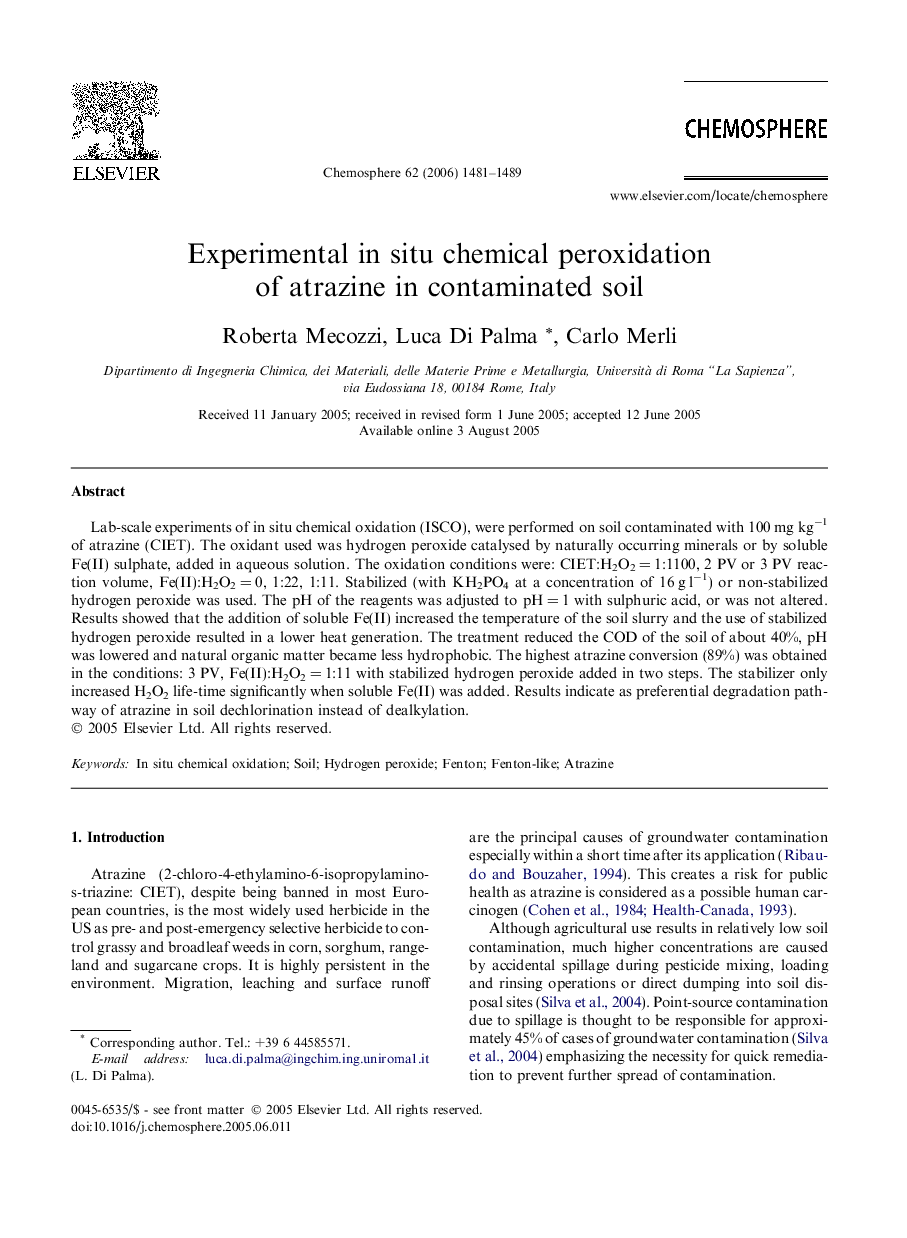| Article ID | Journal | Published Year | Pages | File Type |
|---|---|---|---|---|
| 4415879 | Chemosphere | 2006 | 9 Pages |
Lab-scale experiments of in situ chemical oxidation (ISCO), were performed on soil contaminated with 100 mg kg−1 of atrazine (CIET). The oxidant used was hydrogen peroxide catalysed by naturally occurring minerals or by soluble Fe(II) sulphate, added in aqueous solution. The oxidation conditions were: CIET:H2O2 = 1:1100, 2 PV or 3 PV reaction volume, Fe(II):H2O2 = 0, 1:22, 1:11. Stabilized (with KH2PO4 at a concentration of 16 g l−1) or non-stabilized hydrogen peroxide was used. The pH of the reagents was adjusted to pH = 1 with sulphuric acid, or was not altered. Results showed that the addition of soluble Fe(II) increased the temperature of the soil slurry and the use of stabilized hydrogen peroxide resulted in a lower heat generation. The treatment reduced the COD of the soil of about 40%, pH was lowered and natural organic matter became less hydrophobic. The highest atrazine conversion (89%) was obtained in the conditions: 3 PV, Fe(II):H2O2 = 1:11 with stabilized hydrogen peroxide added in two steps. The stabilizer only increased H2O2 life-time significantly when soluble Fe(II) was added. Results indicate as preferential degradation pathway of atrazine in soil dechlorination instead of dealkylation.
